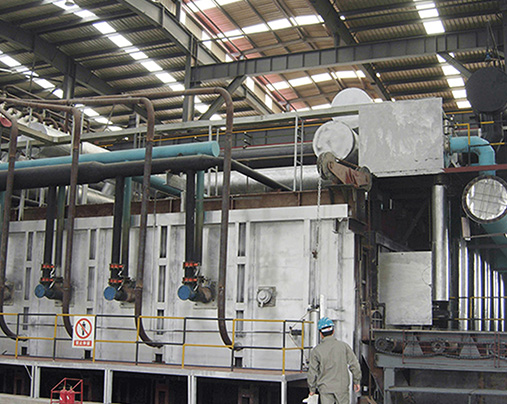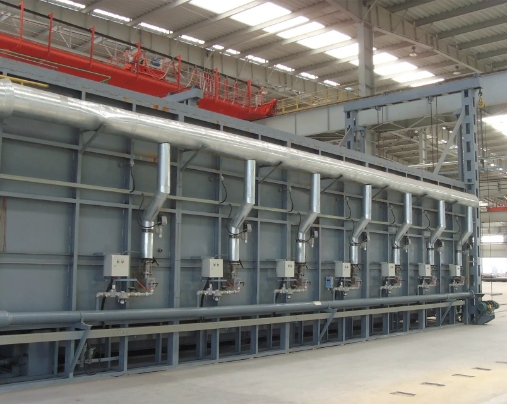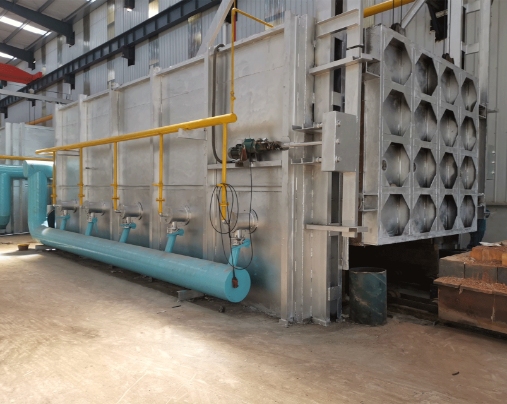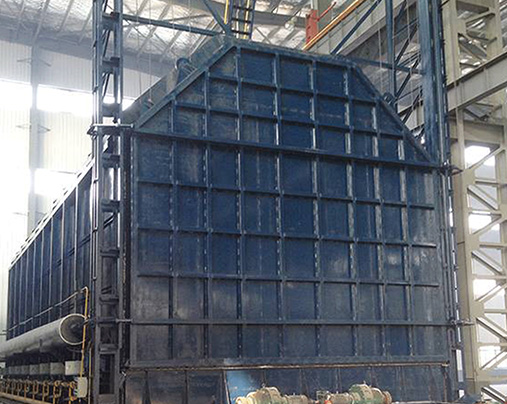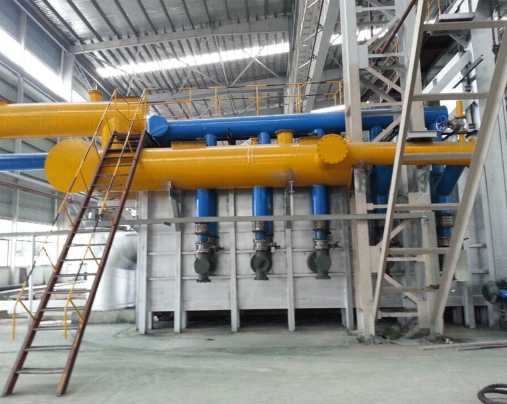
Double Regenerative Wire Heating Furnace
Double Regenerative Wire Heating Furnace
- Here are some specifications that you might find in a typical Double Regenerative Wire Heating Furnace:
- Heating capacity: Double Regenerative Wire Heating Furnaces can heat wire or other materials ranging from a few millimeters to several centimeters in diameter, and up to several meters in length. The furnace heating capacity will depend on factors such as the size of the heating chambers, the type of heating elements, and the power of the regenerative system.
- Temperature range: Double Regenerative Wire Heating Furnaces can typically achieve temperatures ranging from 900°C to 1300°C (1650°F to 2375°F), depending on the specific application and materials being heated. The temperature range of the furnace will depend on factors such as the type of heating elements, the size and insulation of the heating chambers, and the efficiency of the regenerative system.
- Heating elements: The heating elements in a Double Regenerative Wire Heating Furnace can be made from a variety of materials, including ceramic, metallic, or silicon carbide. The choice of the heating element will depend on factors such as the desired temperature range, the type of wire or material being heated, and the specific heating requirements of the application.
- Regenerative system: The regenerative system in a Double Regenerative Wire Heating Furnace typically includes a series of heat exchangers, valves, and ductwork. The size and capacity of the regenerative system will depend on factors such as the size of the heating chambers, the desired temperature range, and the specific heating requirements of the application.
- Control system: The control system may include features such as touch screen interfaces, programmable logic controllers (PLCs), and remote monitoring capabilities.
Description
A Double Regenerative Wire Heating Furnace is a type of industrial furnace that uses regenerative heat recovery to heat wires or other materials to high temperatures.
The furnace consists of two heating chambers, each with its regenerative system. The chambers are separated by a partition that helps maintain temperature control and minimize heat loss. The regenerative systems are designed to recover and reuse heat from the exhaust gases generated during the heating process.
Overall, a double regenerative wire heating furnace is an efficient and cost-effective way to heat wires or other materials to high temperatures, while minimizing energy consumption and reducing emissions.
Double Regenerative Wire Heating Furnace: working principle
The process of heating wires in a double regenerative wire heating furnace typically involves passing the wires through the heating chambers, which are lined with heating elements. The heating elements may use electric resistance or combustion heat sources, such as natural gas or propane, to generate heat. As the wires pass through the chambers, they absorb heat from the heating elements, causing them to reach the desired temperature.
The regenerative systems work by using a series of heat exchangers and valves to alternate the flow of exhaust gases between the chambers. During the heating phase, the exhaust gases from one chamber are passed through the heat exchanger and then into the other chamber, where they heat the heating elements. At the same time, the heat exchanger absorbs heat from the exhaust gases and stores it for later use. During the cooling phase, the valves switch to allow the flow of the exhaust gases in the opposite direction, so that the stored heat is released and used to preheat the incoming air or fuel.
The characteristics
Here are some of the key characteristics of a Double Regenerative Wire Heating Furnace:
- Regenerative heat recovery: A Double Regenerative Wire Heating Furnace uses a regenerative system to recover and reuse heat from the exhaust gases generated during the heating process. This helps to improve the energy efficiency of the furnace and reduce operating costs.
- Dual heating chambers: The furnace has two heating chambers, which are separated by a partition. This allows for better temperature control and reduces heat loss.
- Heating elements: The heating chambers are lined with heating elements, which may use electric resistance or combustion heat sources to generate heat. The heating elements are designed to provide uniform heating and maintain temperature control.
- High-temperature capability: Double Regenerative Wire Heating Furnaces can achieve high temperatures, typically ranging from 900°C to 1300°C (1650°F to 2375°F), depending on the specific application and materials being heated.
- Fast heating and cooling cycles: The regenerative system allows for fast heating and cooling cycles, which can improve productivity and reduce processing times.
- Low emissions: Double Regenerative Wire Heating Furnaces are designed to minimize emissions and reduce environmental impact. The regenerative system helps to reduce fuel consumption and emissions, while the heating elements are designed to provide efficient and clean combustion.


